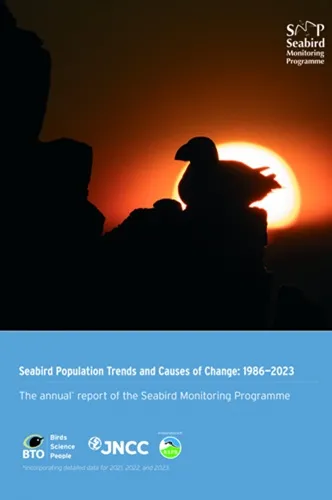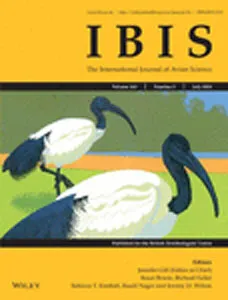BTO create and publish a variety of important articles, papers, journals and other publications, independently and with our partners, for organisations, government and the private sector. Some of our publications (books, guides and atlases) are also available to buy in our online shop.
Annual report of the Seabird Monitoring Programme
Seabird Population Trends and Causes of Change: 1986–2023
This report presents the latest seabird population trends in breeding abundance and productivity using data from the Seabird Monitoring Programme (SMP).
The report documents changes in the abundance and productivity of breeding seabird species in Britain and Ireland from 1986 to 2023, and provides a detailed account of the 2021, 2022 and 2023 breeding seasons.

Search settings
Climate change vulnerability for species—Assessing the assessments
Author: Wheatley, C.J., Beale, C.M., Bradbury, R.B., Pearce‐Higgins, J.W., Critchlow, R & Thomas, C.D.
Published: 2017
07.06.17
Papers
No short- or long-term effects of geolocator attachment detected in Pied Flycatchers Ficedula hypoleuca
Author: Bell, S.C., El Harouchi, M., Hewson, C.M. & Burgess, M.D.
Published: 2017
02.06.17
Papers
Waterbirds in the UK 2015/16
Author: Teresa M. Frost, Graham E. Austin, Neil A. Calbrade, Chas A. Holt, Heidi J. Mellan, Richard D. Hearn, David A. Stroud, Simon R. Wotton and Dawn E. Balmer.
Published: 2017
Waterbirds in the UK presents the summarised results of the annual WeBS report, and full data available via the WeBS Report Online. It provides a single, comprehensive source of information on the current status and distribution of waterbirds in the UK for those interested in the conservation of the populations of these species and the wetland sites they use.
30.05.17
Reports Waterbirds in the UK

Tawny Owl Strix aluco response to call-broadcasting and implications for survey design
Author: Worthington-Hill, J. & Conway, G.
Published: 2017
Capsule: The use of call-broadcasting significantly increases the number of Tawny Owls Strix alucodetected in winter point counts, but requires careful survey design to avoid introducing potentialsources of bias into population estimates.Aims: To examine Tawny Owl response to call-broadcasting to aid survey design in nationalmonitoring efforts.Methods: A nocturnal survey was undertaken at 36 survey points over three nights in winter inThetford Forest, England. Each survey consisted of four consecutive five-minute segments: apassive count, followed by three counts with the use of call-broadcasting.Results: Few (4%) Tawny Owls were recorded during passive surveys, whereas the greatestresponse was during the first and second call-broadcast segments (49% and 36%, respectively).New detections declined to 11% in the final segment. Response was fastest at dusk, althoughtime of night did not significantly affect the number of individuals detected. Male owlsaccounted for 79% of detections.Conclusion: Our results show that ten minutes of call-broadcast surveying will detect 85% ofresponsive Tawny Owls, thus vastly improving detection compared to passive listening alone.However, simultaneous counts of geographically separated detections should be used to providea minimum count and reduce potential double-counting of mobile individuals.
15.04.17
Papers Bird Study
Quantifying the importance of multi‐scale management and environmental variables on moorland bird abundance
Author: Buchanan, G.M., Pearce-Higgins, J.W., Douglas, D.T.J. & Grant, M.C.
Published: 2017
14.04.17
Papers
